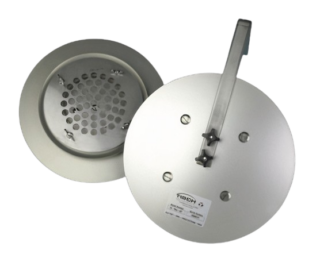Air quality monitoring is essential for public health and environmental safety. Different types of air samplers help capture and measure pollutants, from particulate matter to gases. In this guide, we’ll cover:
- Different types of air samplers and how they work
- Key uses and benefits of each sampler type
- Tips for choosing the right sampler
Overview of Air Samplers
Air samplers fall into two main categories: passive and active. Each has specific uses and advantages, and choosing the right one can make a big difference in air quality data accuracy. Let’s dive into the different types of air samplers and how they work.
Passive Air Samplers
Passive air samplers collect samples without the need for electricity or pumps, making them simple, affordable, and ideal for long-term monitoring.
Diffusion Samplers
Diffusion samplers use the natural process of diffusion, where pollutants move from areas of high to low concentration. Pollutants are absorbed by a filter or sorbent material. These samplers are ideal for monitoring gases such as sulfur dioxide (SO2), nitrogen dioxide (NO2), and ozone (O3).
Active Air Samplers
Active air samplers use pumps to draw air through a filter or sorbent, allowing for more accurate and real-time monitoring.
High-Volume Air Samplers (Hi-Vol)
Hi-Vol samplers collect large air volumes over time by pulling air through a filter. They capture particulate matter (PM) such as PM10 and PM2.5, which are common in regulatory monitoring and air quality research.
Low-Volume Air Samplers (Lo-Vol)
Low-Vol samplers work like Hi-Vol samplers, but collect less air, targeting specific pollutants like lead and other trace metals. They’re useful in smaller, localized studies or industrial settings.
Personal Air Samplers
Personal air samplers are wearable devices that monitor an individual’s exposure to pollutants. They’re essential in occupational health for assessing workers’ exposure to dust, fumes, or gases.
Cascade Impactors
Cascade impactors are specialized samplers that separate particles by size. They work by drawing air through multiple stages, each designed to capture specific particle sizes. Researchers use them to study particle composition in detail.
Applications for Different Types of Air Samplers
Each air sampler type has specific applications, whether for compliance, research, health, or indoor quality monitoring.
- Regulatory Monitoring: Hi-Vol and Lo-Vol samplers measure particulate levels to ensure compliance with air quality standards.
- Environmental Research: Diffusion samplers and cascade impactors are used to study sources and effects of pollutants.
- Occupational Health: Personal air samplers protect workers by monitoring exposure to harmful substances in various industries.
- Indoor Air Quality: Personal samplers help monitor pollutants in homes, offices, and other indoor spaces.
Choosing the Right Air Sampler
Selecting the right air sampler involves considering the pollutant, environment, and data needs.
Pollutant Type
Each sampler measures specific pollutants. For example, Hi-Vol samplers are best for particulate matter, while diffusion samplers target gases. Understanding the target pollutant is key to choosing the right sampler.
Sampling Duration
The sampling duration is another factor. Passive samplers work well for long-term studies, while active samplers are better for short-term or real-time monitoring.
Monitoring Environment
The monitoring location is crucial. Outdoor studies may need robust Hi-Vol or Lo-Vol samplers, while portable samplers are better suited for indoor or personal monitoring.
Data Accuracy
Some studies require more detailed data. For example, research may call for cascade impactors to analyze particle sizes, while regulatory monitoring focuses on overall particulate concentrations.
Conclusion
Understanding the different types of air samplers is essential for anyone involved in air quality monitoring. From regulatory compliance to scientific research and occupational safety, each sampler type offers unique benefits. By selecting the right sampler based on pollutant type, sampling duration, environment, and data needs, you can gather accurate, reliable air quality data.
For further information on air sampling equipment and choosing the right solution for your project, visit our product page at www.tisch-env.com/shop/.










Get Social